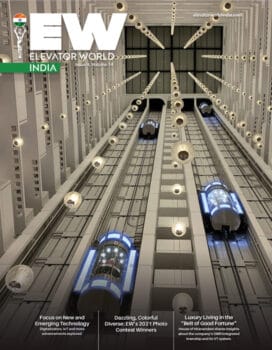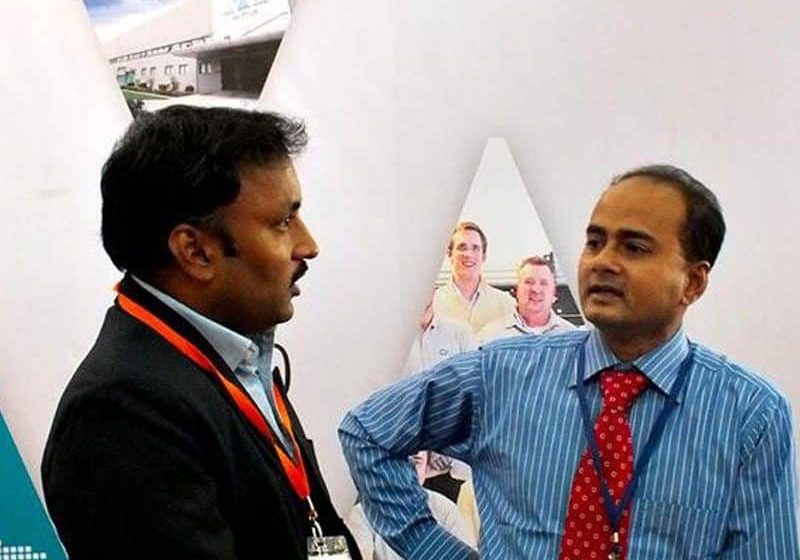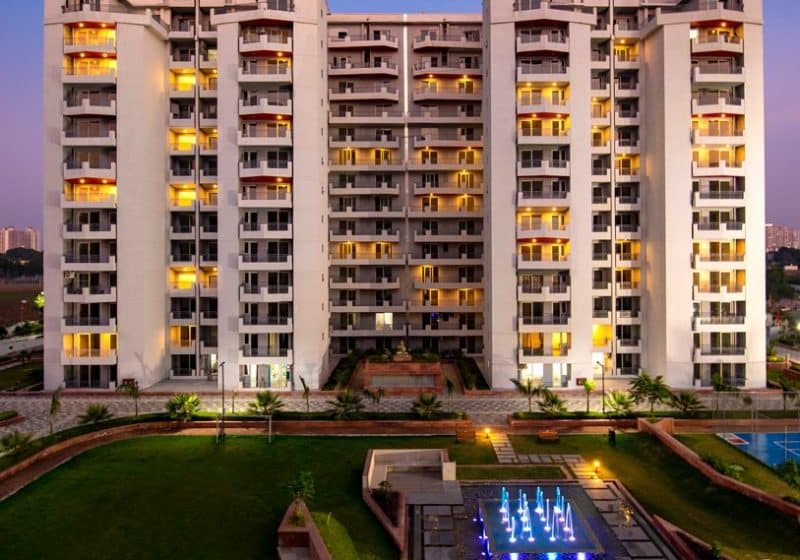Your author examines elevator industry innovations with public safety in mind.
“Design is not just what it looks like and feels like. Design is how it works.” – Steve Jobs
Invention has always been a hallmark of humans. This is what sets humanity apart from the rest of the species in the chronology of evolution. The main stimulus for the drive to innovate or design has always been the need to adapt to the changes in the immediate habitable environment. When humans were living in caves, it was the need to take shelter from the elements or seek refuge from predators or safeguard various other personal and community interests. It was this drive that enabled humanity to evolve from living in caves to the present day. Throughout the history of mankind — in every age, every era — whenever a situation presented itself that had a big impact on their living conditions, humans have always gotten together to adapt to the changes in the environment.
The elevator industry has also been at the forefront in adopting and continuously developing innovations, not only by introducing safety norms regarding elevator usage, but also by rethinking elevator design and performance for more efficiency, as well as passenger health and safety.
This is the drive that we see in the response to overcoming the COVID-19 situation. Even in the present circumstances, humans have shown the resiliency to quickly adapt to the situation at every level, right from the individual to the collective. This has led to innovations in various spheres of human activity, especially regarding safety and human health. The elevator industry has also been at the forefront in adopting and continuously developing innovations, not only by introducing safety norms regarding elevator usage, but also by rethinking elevator design and performance for more efficiency, as well as passenger health and safety.
For starters, most elevator passengers adhere to the mandatory norms of sanitizing hands before and after travel, wearing a mask, trying to avoid any kind of verbal communication to prevent droplets or aerosols lingering in the air, maintaining a safe social distance, facing the lift walls and, more importantly, avoiding touching any surface while traveling in the lift. These are a given, to use a clichéd term in the “new normal.”
To facilitate ease of maintaining these safety measures and making the elevator ride as smooth as possible, a lot of design interventions are being strategized. For example, the Internet of Things (IoT) is being integrated with elevators so they can now function by being connected with user smartphones, such that the passenger can simply key in a floor number through a smartphone app, thus avoiding any kind of surface touch. Also, through the IoT, the elevator internal atmosphere can be assessed for aerosol and other toxic elements at regular intervals. Again, periodic elevator sanitization is being integrated into the design, such that after a certain number of rides in the day, the elevator car is automated to sanitize itself.
The entire assembly of elevator travel, including the car, the lobby, as well as the core, is undergoing a rethink to make future elevator travel as safe and as comfortable as it can ever be. May we all elevate in tandem to a healthier future.
Insights by Architect Arvind Mamania:

With high rises being the norm, it would be advisable to have larger lift sizes to allow for adequate space between passengers. To take care of traffic, the elevator core can be retrofitted with more cars. This will help prevent people from rushing into a single elevator all at once.
Also, by and large, people are following safety norms due to the pandemic. But, to avoid any kind of laxity, it would be helpful to have information displayed in lift lobbies, as well as within the lifts by visual imagery or a running monitor display. This will be greatly beneficial in public places like malls, offices and other institutional buildings, which are visited by a large number of people and could be potential disease-spreading hubs.
One major vantage area could be the lift doors. While traveling in elevators, people stare blankly at the doors. The doors could be fitted with slim monitors or glass displays with built-in LED screens that provide visual relief, as well as double up as information media. Again, to make elevator travel more user-friendly, these display doors could be interactive panels, wherein the passengers can employ them to communicate from within the elevator itself. These could also play a huge role in terms of passenger safety, especially concerning women, children and the elderly.
Another safety precaution that could be taken is sanitizing the elevators at frequent intervals during the day. There could be some unsuspecting passengers who could be asymptomatic and may infect other users. Through regular sanitization, the chance of other passengers getting infected is largely eliminated.
Most apartments and buildings are observing safety measures, but when it comes to public health, one can never afford to be complacent. It’s always good to be a little more watchful.
Ar. Arvind Mamania is a B.Arch. from Mumbai University, a member of Fellow Indian Institute of Architects (FIIA), a post-graduate diploma holder from the Institute for Housing Studies (Holland) and director, Rachna Sansad.
Insights by Architect Rajiv Mishra:

Elevators are, by default, closed units. There could always be the risk of traveling alongside an infected person or an asymptomatic carrier. Research has shown that the virus can linger in the air even after the infected person has long exited the elevator. Thus, one area where elevators could make headway is in providing adequate natural ventilation or at least creating exhaust outlets, perhaps at the roof of the car. This way, there will be a continuous flow of natural air, while also removal of foul air along with any airborne particulates, which could account for future infections.
Also, it would be advisable to have periodic sanitization of elevator cars during the day, as well as a comprehensive sanitization every week. This will greatly curb any kind of infection occurring during elevator travel.
Another way to increase safety within elevators would be to have different elevators that specifically cater to designated floors. This way, there will be less crowding within elevators. Of course, this will mean having more elevators within a structure with more spaces dedicated to lift lobbies. But when it comes to human safety, there should be no room for compromise.
Rajiv Mishra is an architect, town planner, urbanist, real estate valuer and education manager who serves as principal with the Sir JJ College of Architecture, University of Mumbai and director, directorate of art, Government of Maharashtra.
Get more of Elevator World. Sign up for our free e-newsletter.




